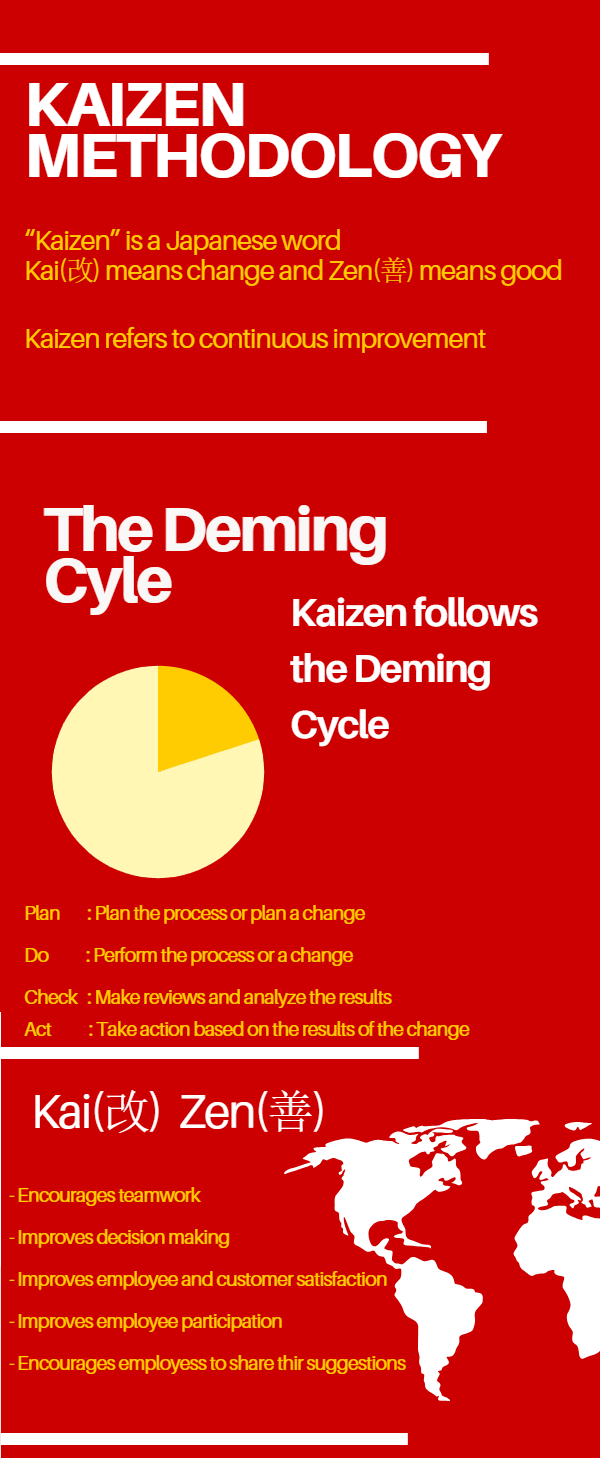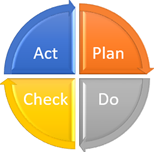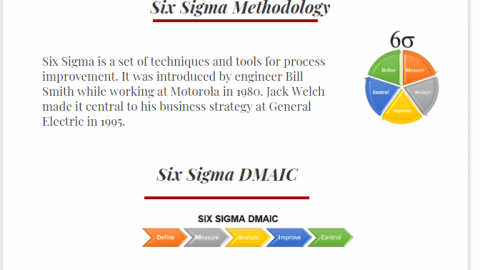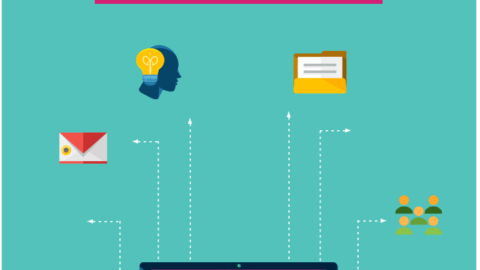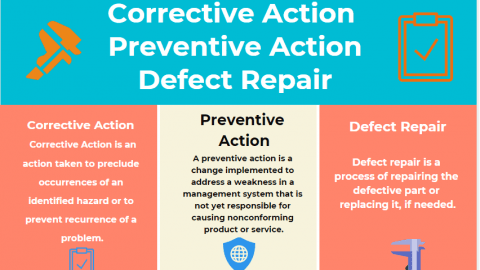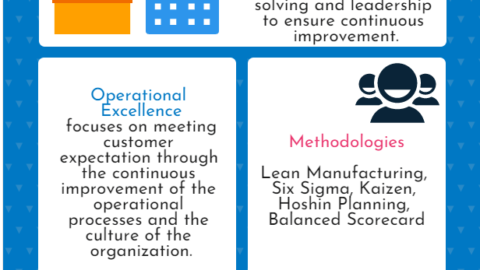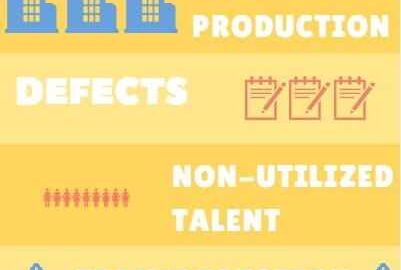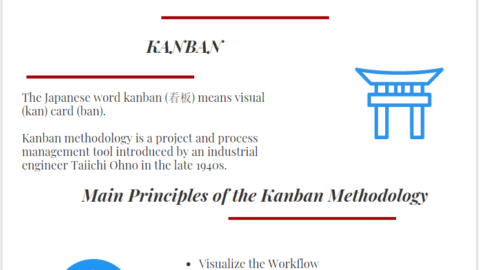Kaizen Methodology for Process Improvement
Productivity is very important in today’s competitive business environment. Organizations seek ways of improving their processes, reducing costs and increasing their benefits. Kaizen is a management system that aims continuous improvement within all processes of an organization. It has similarities with other methodologies such as 5s and the lean methodology.It can be applied to any processes of industries from logistics to manufacturing. Many industries such as healthcare, manufacturing, IT, software, construction, defense, service, automotive, etc. take advantage of implementing Kaizen methodology. This article discusses the key aspects of Kaizen methodology for process improvement.
Table of Contents
The Concept of Kaizen Process Improvement Methodology
The word “Kaizen” is a Japanese word which means “improvement”. Kai (改) means change and Zen (善) means good. Although the translation of the word is good change or good improvement, the Kaizen methodology refers to activities that continuously improve all functions of an organization. It seeks to involve all the employees from low level to top level within the organization. Kaizen is a continuous improvement strategy which can be applied to business, manufacturing, workplace, organizations and also to personal life.
Kaizen aims to find ways of implementing standardized processes. Therefore Kaizen obtains the most effective practices for a process. Establishing a standardized structure is a live process which should be analyzed and improved continuously.
A Brief History
Although Kaizen was first practiced after World War II in the Japanese manufacturing industry, it was introduced by an organizational theorist Masaaki Imai in his book Kaizen: The Key to Japan’s Competitive Success in 1986. It has been implemented in many industries since 1986. Today Kaizen is a worldwide methodology for an organization’s long-term competitive strategy.
Implementing Kaizen Methodology
As discussed in the first paragraph, Kaizen principles are applicable to many industries and even to personal life. It involves a set of approaches required to analyze and improve processes for production. Employees within this strategy are contributors to quality improvement system.
No matter what your organization’s size is, successful implementation of Kaizen relies on the participation and efforts of the employees from sub level to top level.
Kaizen helps to identify and quickly remove waste in all phases of an organization through improving standardized tasks and processes. Wastes can be anything that does not add value to a process. Wasted time, wasted energy, overproduction are the wastes. In order to implement it, employees in all phases of an organization should receive training on the concept of Kaizen.
Implementation of Kaizen process improvement methodologies has three basic steps which are below
1. Encourage participation: Encourage participation step aims to encourage teamwork and ensure that all employees to become a part of this process.
2. Training and education: Training plays a significant role in Kaizen implementations. Employees, team leaders, managers should be trained on the concept of Kaizen at this step.
3. Quality Improvement: Practitioners should continue to focus on long-term implication and applications for continuous improvement.
For a successful Kaizen implementation, employees should be supported by the top management. With the help of Kaizen Boards, employees can post their ideas and decisions for each process. This removes the barriers between employees and management.
Kaizen Methodology and the PDCA Cycles ( Deming Cycle )
Likewise Kaizen, the Deming cycle focuses on continuous improvement within a process. The Deming cycle has four steps ;
Plan : Plan the process or plan a change
Do : Perform the process or a change
Check : Make reviews and analyze the results
Act : Take action based on the results of the change
The cycle of Kaizen implementation process follows the Deming cycle: “Plan → Do → Check → Act”.
5 Whys Technique , 5s Methodology, Kanban Methodology, Root Cause Analysis and Fishbone Diagram can be used in conjunction with the Kaizen Methodology .
Main Principles
Kaizen principles aim to improve processes because well-established processes bring desired results. Improving communication and collaboration within the team makes the Kaizen every employees business.
Advantages and Disadvantages of Kaizen Methodology
Advantages of Kaizen Methodology
There are lots of benefits of Kaizen. A few benefits of this methodology are listed below.
Basically, the Kaizen Methodology;
- Encourages teamwork
- Improves decision making
- Improves employee and customer satisfaction
- Improves employee participation
- Encourages employees to share their suggestions
- Improves the quality of a product or a process
- Improves safety in the workplace
- Improves productivity
- Reduces wastes (eliminates wastes)
- Builds a company culture
- Trains employees to think for improving their works
- Provides continuous improvement within an organization
- Improves collaboration and communication
Disadvantages of Kaizen Methodology
Below are some disadvantages of Kaizen.
- Lack of collaboration and communication hinder the effective implementation of Kaizen.
- Sometimes former employees may be against the implementation of new techniques and solutions.
- Lack of participation obstructs the effective use of Kaizen.
- Lack of management support decreases employees motivation.
Summary
Kaizen creates action plans for improving specific processes of an organization. These action plans involve teams and employees from worker to CEO level. All the employees can share their suggestions to improve the process. With this feature, Kaizen builds company culture and engages all employees while implementing the improvements. Kaizen and Lean Manufacturing have similar targets. Both of them aim to improve processes and eliminate wastes. Kaizen creates a culture for continuous improvement in an organization and ensures all employees to become a part of this process. The Kaizen methodology provides benefits to any industry, from manufacturing to healthcare. It encourages teamwork and involves every employee in making small, daily changes. Note that essential daily changes provide major improvements in time.
External References

Since 2004 I work for ICT Management which provides worldwide quality management service. Passionate about new technologies, i have the privilege to implement many new systems and applications for different departements of my company. I have Six Sigma Green Belt.

